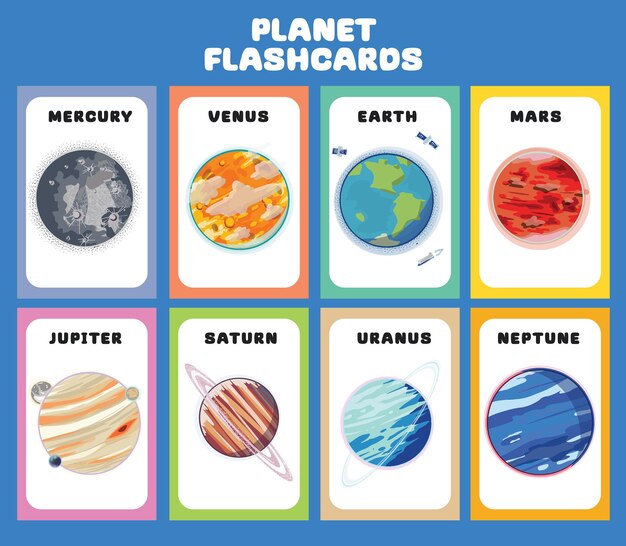

Jupiter is the largest planet in our solar system.
Jupiter is known as the gas giant because it is made up mostly of gases.
Jupiter has a giant storm called the Great Red Spot that has been raging for centuries.
Jupiter has at least 79 moons, the largest of which is called Ganymede.
Jupiter’s magnetic field is 14 times stronger than Earth’s.
Jupiter is so big that it could fit all the other planets in our solar system inside it.
If Jupiter were a star, it would need to be about 80 times more massive to become a true star like the Sun.
Jupiter is named after the king of the Roman gods.
Jupiter is bright enough to be seen from Earth with the naked eye.
Jupiter’s day is the shortest among all the planets, lasting only about 10 hours.
Jupiter’s atmosphere is made up of hydrogen and helium gas, just like the Sun.
Jupiter has different colored bands in its atmosphere caused by different gas compositions.
Jupiter’s gravity is so strong that it can slingshot asteroids out of our solar system.
Jupiter has a ring system, although it is very faint and not as prominent as Saturn’s rings.
The first spacecraft to visit Jupiter was Pioneer 10, which flew by in 1973.
Jupiter has a thick layer of clouds that can be seen with a telescope.
Jupiter’s temperature ranges from extremely cold to extremely hot, depending on the depths of its atmosphere.
Jupiter experiences intense lightning storms, much more powerful than those on Earth.
Jupiter’s moons have diverse features, including craters, valleys, and even volcanoes.
Some of Jupiter’s moons, like Europa, have an icy crust that scientists believe might hide a liquid ocean beneath.
Jupiter has been visited by several spacecraft, including the Galileo probe, which orbited the planet.
Jupiter’s iconic Great Red Spot is actually a massive storm that could engulf the entire Earth.
Jupiter has a faint system of rings that were discovered by the Voyager missions in the late 1970s.
Jupiter’s rotation is tilted at an angle, causing its magnetic field to be off-centered.
Jupiter’s size and gravity help to protect the inner planets of our solar system from asteroid impacts.
Jupiter’s cloud bands are made up of different gases, including ammonia and methane.
Jupiter’s thick atmosphere makes it difficult to see what lies beneath its clouds.
Jupiter’s immense gravity creates a high-pressure environment, making it impossible for humans to land on the planet.
Some of Jupiter’s moons have volcanically active surfaces, with eruptions that spew out particles and gases.
Jupiter’s moon Io is the most volcanically active object in the solar system.
Jupiter has a faint magnetic field that stretches out for millions of kilometers into space.
Jupiter’s magnetosphere is the largest of any planet in our solar system.
Jupiter’s moon Ganymede is the largest moon in the solar system, even bigger than Mercury.
Jupiter’s immense size causes its shape to be slightly flattened at the poles.
The first spacecraft to enter orbit around Jupiter was the Galileo probe in 1995.
Jupiter’s strong gravitational pull creates tidal forces on its moons, causing them to have volcanic activity.
The Juno mission, launched in 2011, is currently studying Jupiter’s atmosphere and magnetic field.
Jupiter is the fifth planet from the Sun, located between Mars and Saturn.
Jupiter’s gravity can sometimes cause asteroids and comets to collide with its surface.
Jupiter’s massive size allows it to have a strong influence on the orbits of other planets in our solar system.
Jupiter is the fastest-spinning planet in our solar system, completing a rotation in under 10 hours.
Jupiter’s strong magnetic field traps charged particles, creating intense radiation belts around the planet.
Jupiter is often referred to as a failed star because it does not have enough mass to sustain nuclear fusion in its core.
Jupiter’s atmospheric bands are constantly changing and evolving, driven by powerful winds.
Jupiter has been a source of fascination and inspiration for scientists and astronomers for centuries.
Around the world, coffee enthusiasts enjoy Monin coffee concentrate since it is a multipurpose product. Conveniently combining…
The Importance of Choosing the Right Shower for Your Bathroom Renovating your bathroom can be…
Usain Bolt holds the record for the fastest 100-meter sprint in history.Bolt was named Sportsman…
Love is in the air... and it smells suspiciously like chocolate!Roses are red, violets are…
Life's a beach, take a picture and relax.Sun, sand, and salty kisses. That's what beach…
Hungary is home to the largest thermal water cave system in the world.The Rubik's Cube…